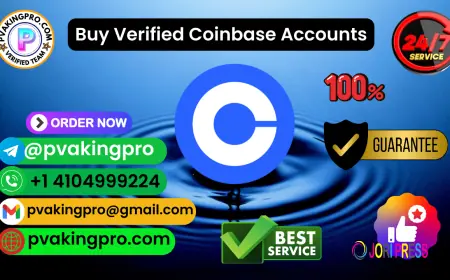Rediscovering Inner Peace: A Journey Through Emotional Healing
In today’s fast-paced world, where the pressures of performance, productivity, and perfection mount daily, emotional well-being often takes a backseat. We may function outwardly with ease, showing up for work, friends, and family, while inwardly battling emotional fatigue, suppressed trauma, or simply a lingering sense of disconnection. Healing, in its truest sense, is not just about alleviating symptoms — it’s about understanding, reconnecting, and transforming from within.
This article explores the profound journey of emotional healing and how it helps us reconnect with a core truth many of us forget in the hustle of life: that we just feel good when we are aligned, heard, and whole.
What Is Emotional Healing?
Emotional healing refers to the process of recognizing, processing, and resolving deep emotional pain or trauma. This pain may arise from childhood wounds, unresolved grief, relationship conflicts, or years of ignoring inner needs. Unlike physical injuries that often receive immediate attention, emotional wounds tend to be buried, often under the mask of resilience.
But healing begins when we choose to stop running from ourselves. It starts with a simple acknowledgment: “Something within me doesn’t feel right, and I want to understand it.”
The Invisible Weight We Carry
Many of us carry burdens from our past — things we were told, experiences we lived through, or pain that was never fully processed. We may hear inner voices saying we’re not good enough, or experience cycles of anxiety without knowing their root cause. These invisible wounds shape our relationships, self-esteem, and ability to trust.
Over time, this inner dissonance can show up in many ways:
-
Chronic stress and anxiety
-
Difficulty forming close connections
-
Self-sabotaging behavior
-
Emotional numbness
-
Feeling stuck or unmotivated
Ignoring these signs doesn’t make them disappear. Healing invites us to turn toward them with compassion.
The Role of Safe, Guided Support
True emotional healing is not a solitary journey. While introspection plays a major role, having a guide — someone trained in trauma-informed care, energy healing, or somatic therapy — can help create a container for safe exploration. Professionals in this space often help us reconnect with parts of ourselves we’ve disowned or forgotten.
One such platform offering gentle yet powerful support is we just feel good, which provides energy-based and trauma-informed wellness experiences tailored for those who are ready to reconnect with their emotional bodies. This kind of integrative approach is especially important for people who have tried traditional talk therapy but still feel stuck in their healing.
Healing Through the Body
The body keeps the score. Emotional trauma often lodges in the body, manifesting as tension, chronic pain, or illness. That's why body-centered practices such as somatic healing, breathwork, and energy therapy are so effective — they allow us to bypass the analytical mind and communicate with the body directly.
Some benefits of these approaches include:
-
Releasing stored emotional pain
-
Learning to identify and honor body signals
-
Cultivating presence and self-awareness
-
Regulating the nervous system
When you start to feel your emotions instead of intellectualizing them, a deeper shift begins to occur. The numbness fades, clarity returns, and a soft sense of peace begins to bloom.
Creating a Daily Ritual of Emotional Wellness
Healing isn't a one-time event. It’s a commitment to showing up for yourself, day after day. Fortunately, you don’t need hours of free time or access to a personal coach to start building emotional resilience. Small, consistent practices can go a long way.
Here are a few daily tools to nurture emotional well-being:
-
Journaling: A safe space to express emotions without judgment. Try writing about how your body feels today, what you're grateful for, or what memories are surfacing.
-
Meditation or Breathwork: Even five minutes of mindful breathing can calm the nervous system and create spaciousness within.
-
Movement: Gentle yoga, walking, or stretching can help release emotional tension stored in the body.
-
Affirmations: Speaking kind truths to yourself can rewire internal belief systems.
-
Creative Expression: Drawing, singing, or dancing gives emotions an outlet beyond words.
The Importance of Community and Shared Healing
One of the most beautiful realizations on this journey is that we’re never alone. Healing in community — whether through group workshops, retreats, or virtual circles — allows us to witness others in their vulnerability and be witnessed in ours. That mutual witnessing is powerful. It validates our pain and reminds us that our feelings are neither strange nor shameful.
Shared healing dissolves the illusion of separation. When we hear someone speak a truth we've been too scared to say out loud, something clicks. Our heart softens. We allow ourselves to be seen — maybe for the first time in years.
Letting Go of the Past, Reclaiming the Present
There is no timeline for healing. Some wounds go deep and take time to unpack. What matters is your willingness to begin, your courage to face discomfort, and your commitment to choosing yourself again and again.
The beauty of emotional healing is that it doesn’t just remove pain — it awakens joy, spontaneity, creativity, and connection. You begin to respond instead of react. You start to feel safe in your body, at home in your heart.
And ultimately, it brings you back to a natural state of being — one where you don't have to force happiness, chase success, or numb your pain. You arrive in the present moment, open-hearted and alive. You realize that underneath all the layers, we just feel good — because it’s our birthright.
What's Your Reaction?
 Like
0
Like
0
 Dislike
0
Dislike
0
 Love
0
Love
0
 Funny
0
Funny
0
 Angry
0
Angry
0
 Sad
0
Sad
0
 Wow
0
Wow
0

















































